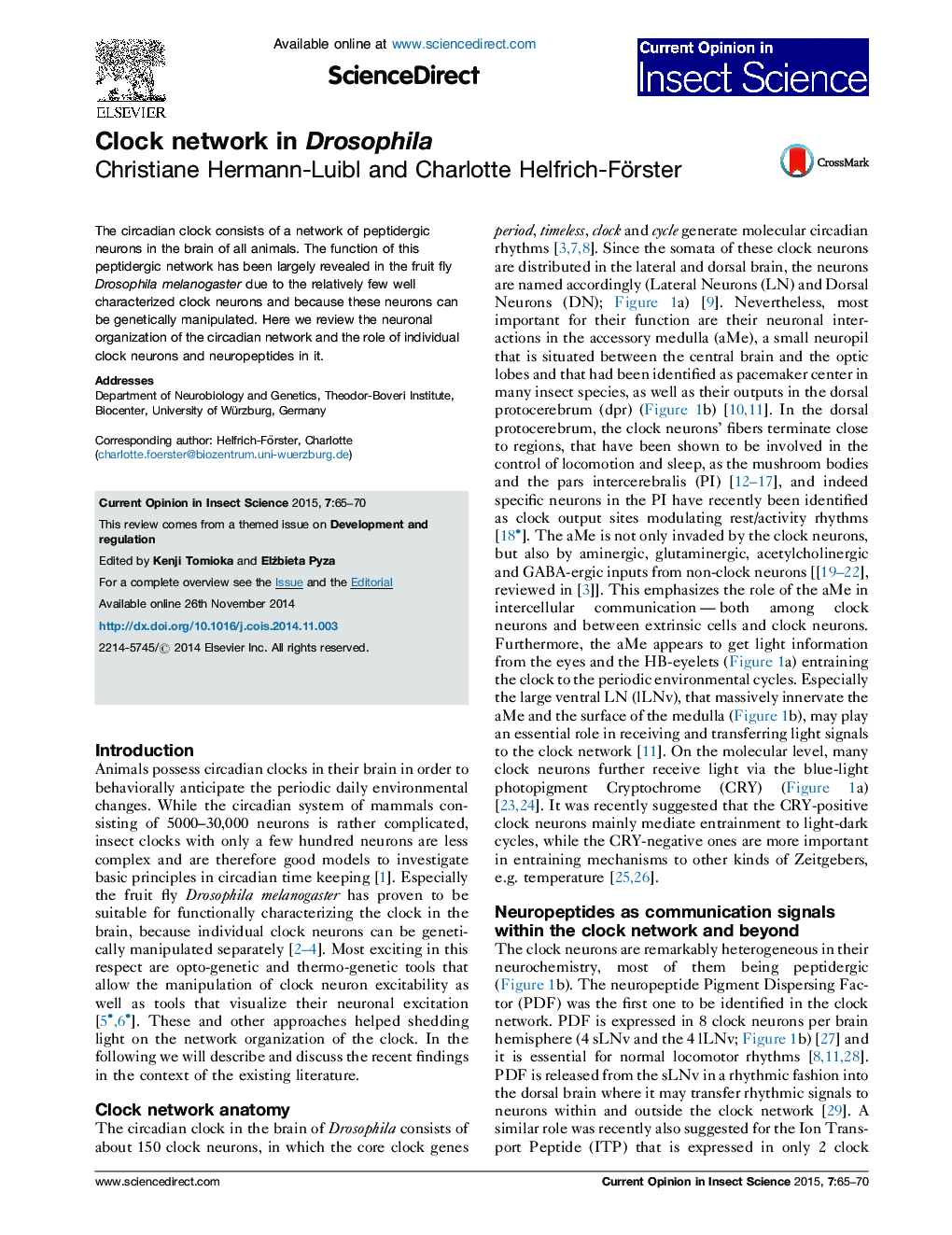| Article ID | Journal | Published Year | Pages | File Type |
|---|---|---|---|---|
| 4508305 | Current Opinion in Insect Science | 2015 | 6 Pages |
Abstract
•The anatomy of the clock network is well characterized.•The clock utilizes different neuropeptides as communication signals.•The dual oscillator model explains behavioral features of Drosophila.•Analysis of the functional connectivity within the clock network is in progress.
The circadian clock consists of a network of peptidergic neurons in the brain of all animals. The function of this peptidergic network has been largely revealed in the fruit fly Drosophila melanogaster due to the relatively few well characterized clock neurons and because these neurons can be genetically manipulated. Here we review the neuronal organization of the circadian network and the role of individual clock neurons and neuropeptides in it.
Related Topics
Life Sciences
Agricultural and Biological Sciences
Agronomy and Crop Science
Authors
Christiane Hermann-Luibl, Charlotte Helfrich-Förster,
